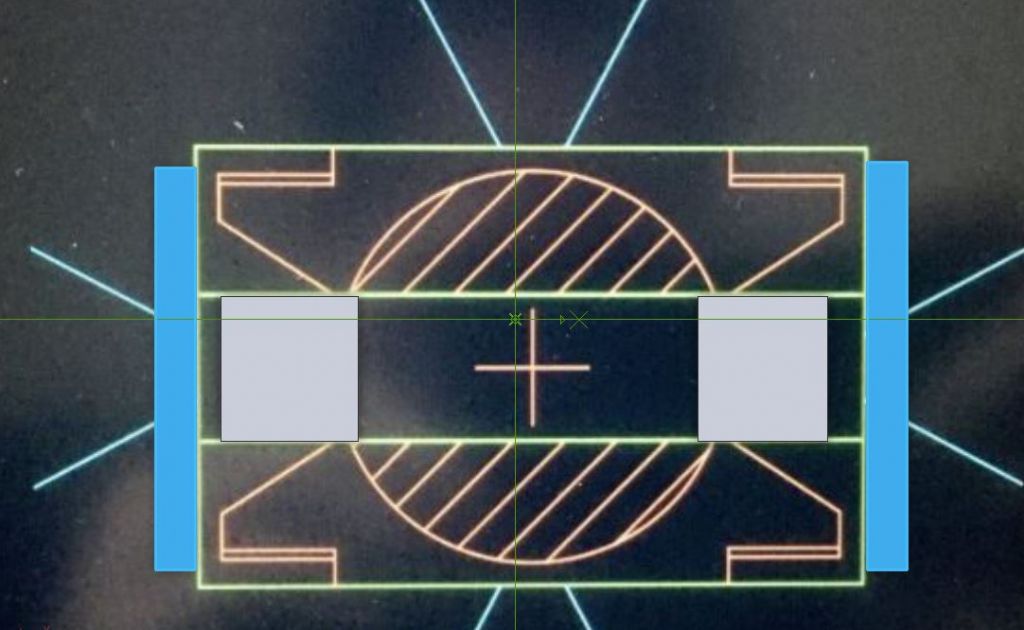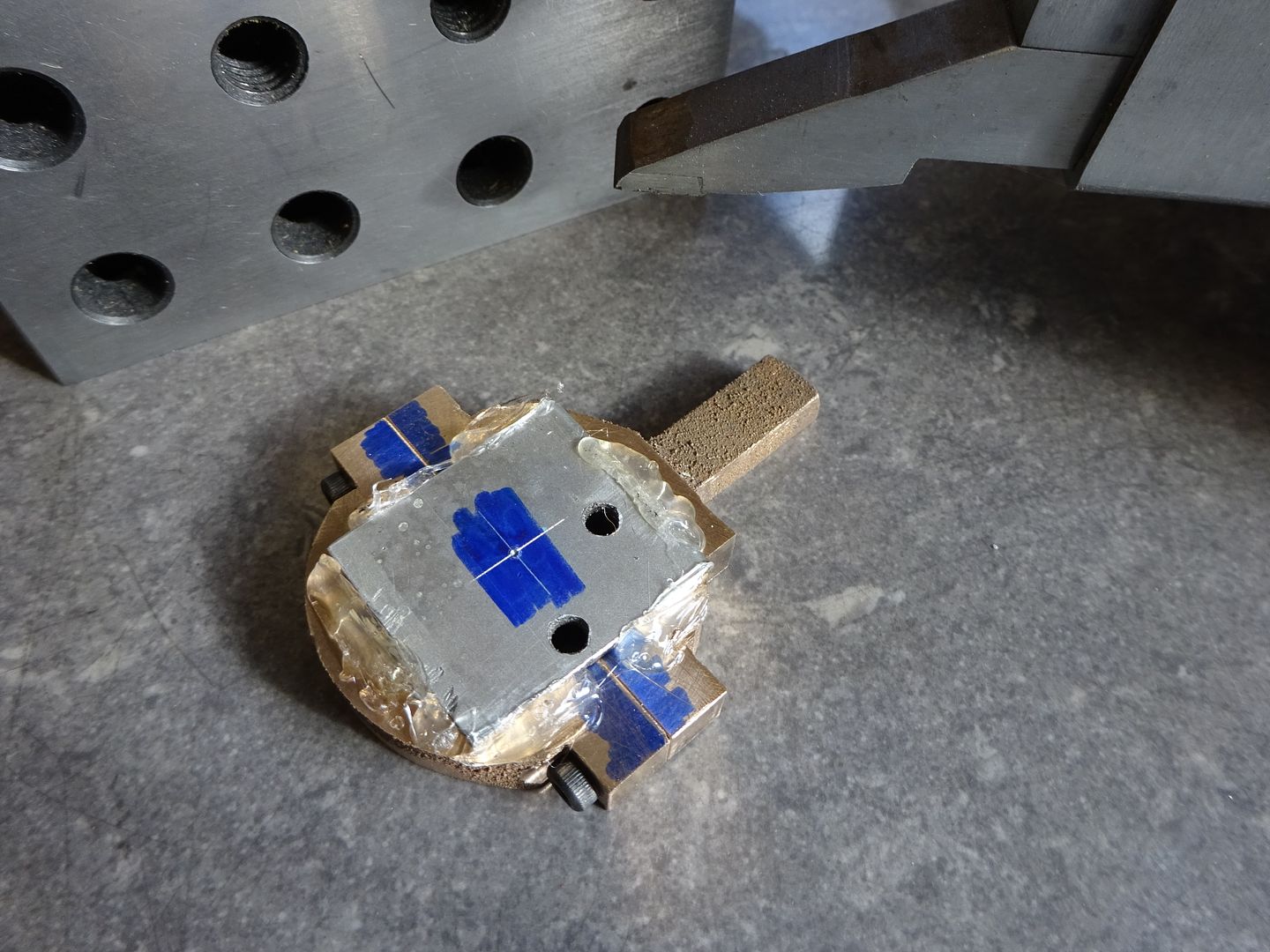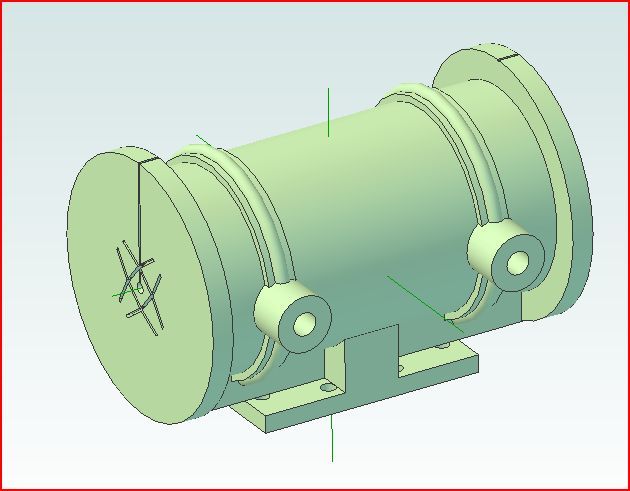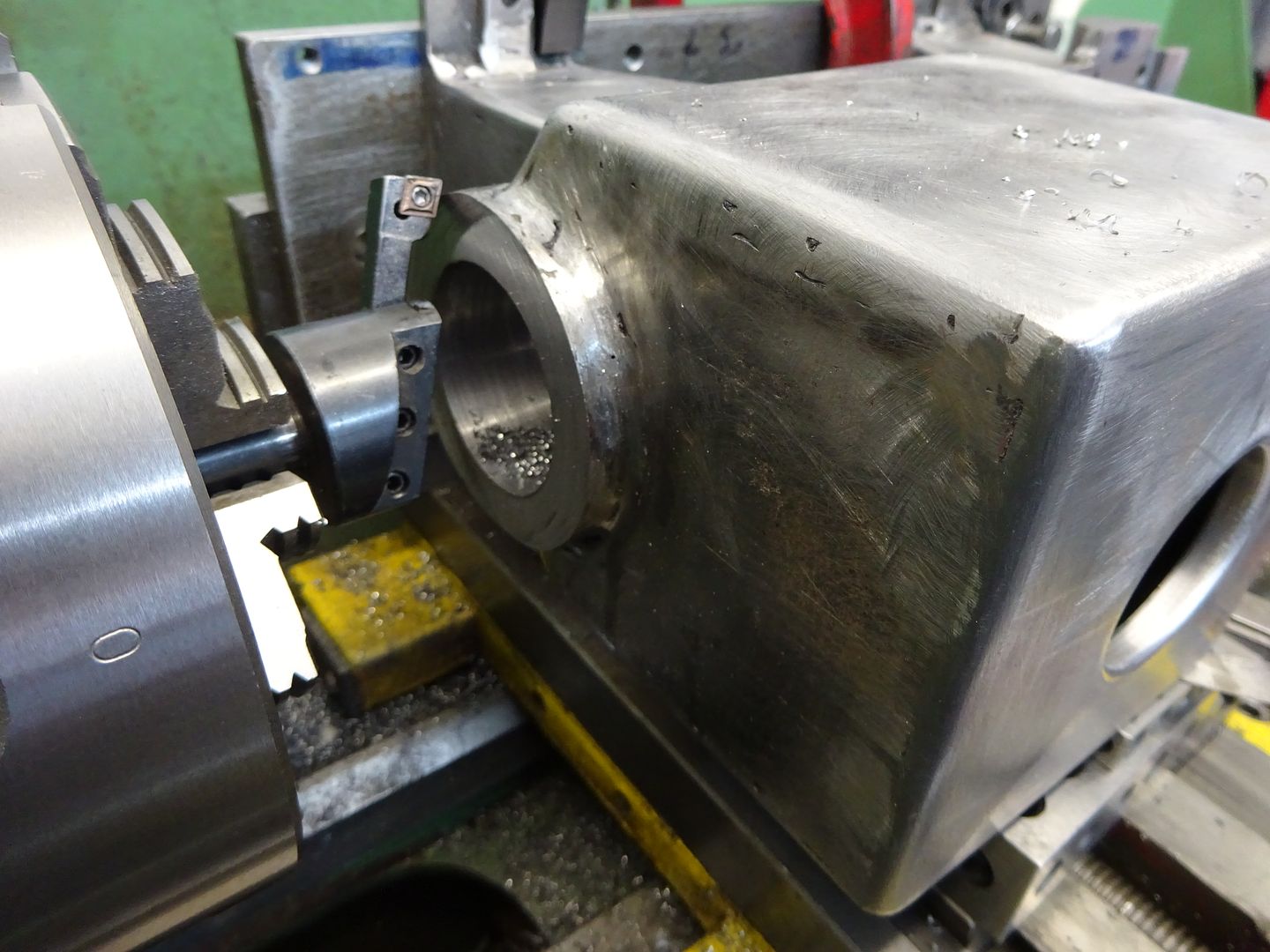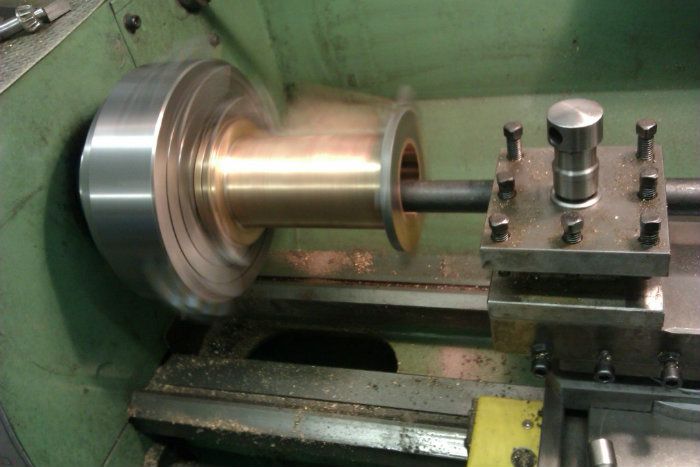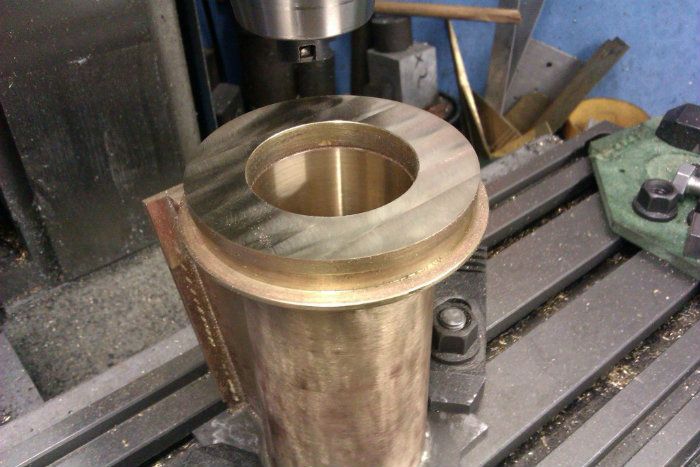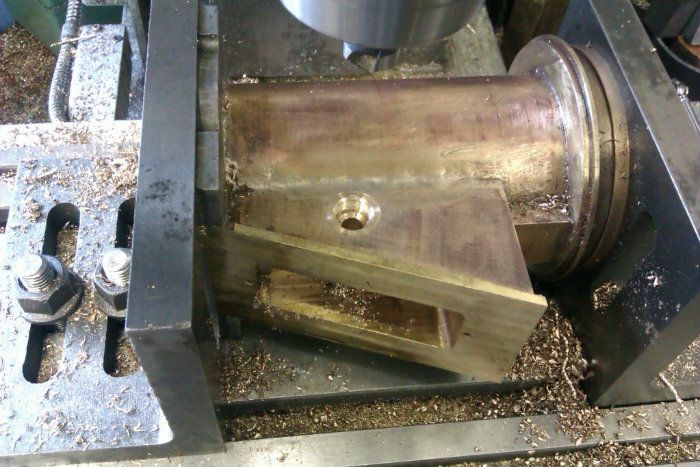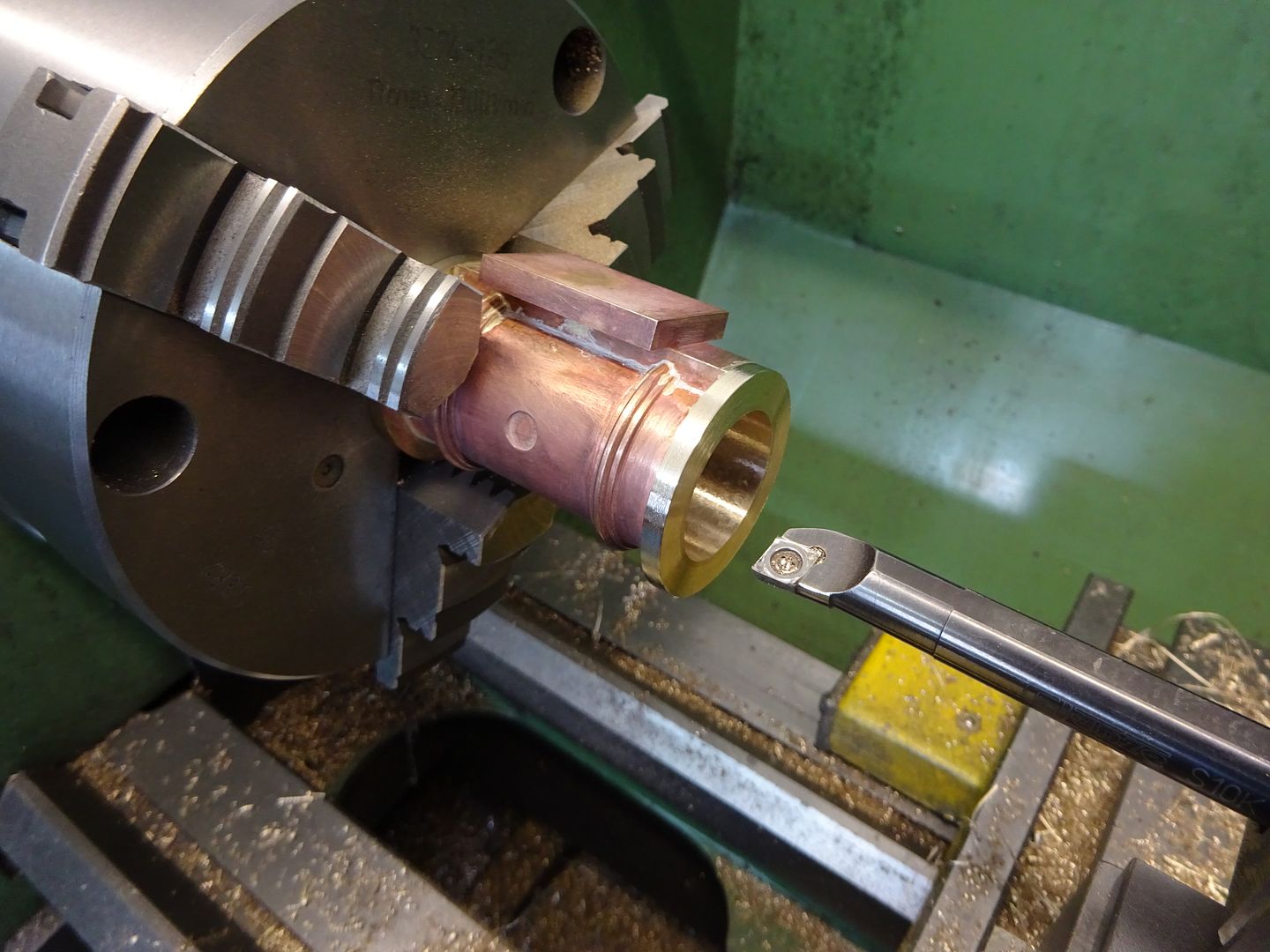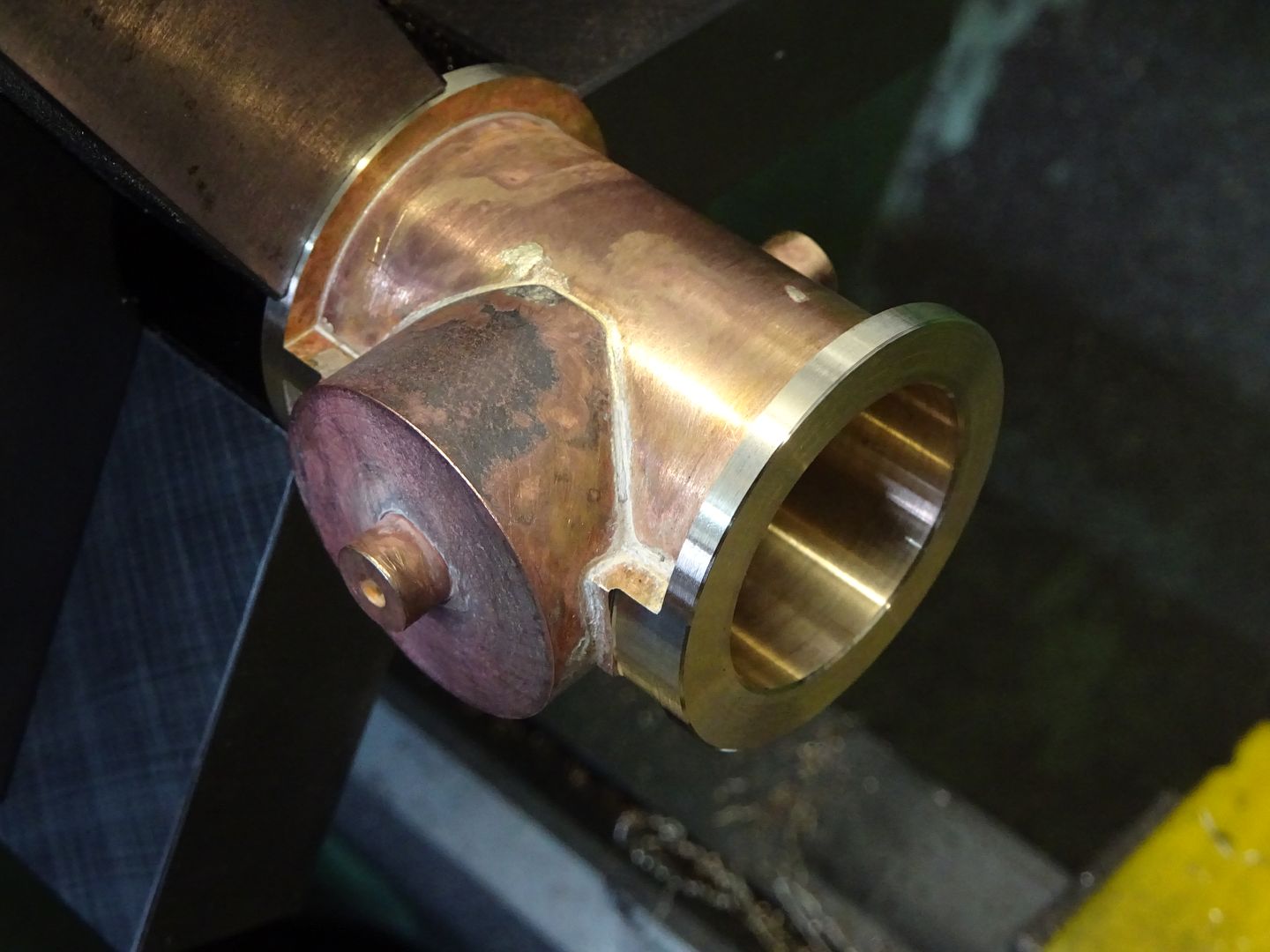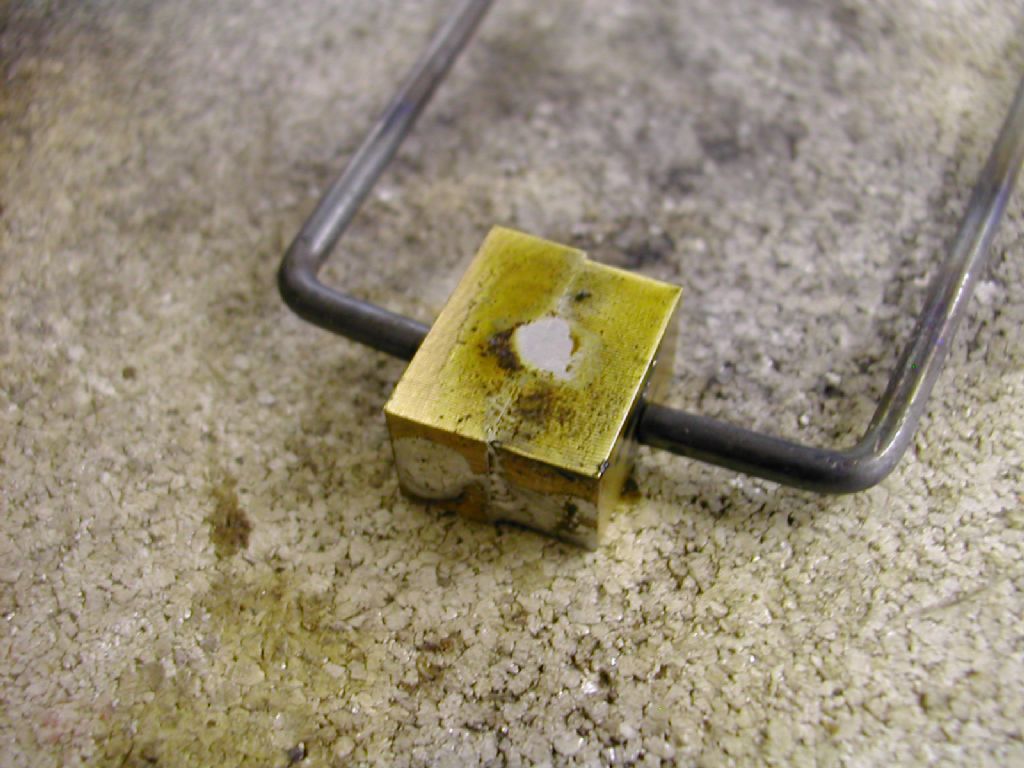So I've been pondering the workflow for the cylinders again. I know I've asked about this before, but it's a bit confusing because there are a lot of things that need to be assembled and aligned, and I don't want to end up with cylinder feet that have to be noticeably asymmetric to correct things:
a) The cylinder axis needs to be aligned with the bed, vertically, horizontally and longitudinally.
b) The valve face needs to be horizontal and flat (and there's hardly any machining allowance on it).
c) The feet have to be fixed to the cylinder in such a way that their lower spigots fit snugly between the beds ( I assume), aligned with the existing holes in the bed, and also make the cylinder axis conform with a).
Current thoughts are:
1) Make the upper features of the feet exactly to drawing (width, length, circular cylinder seatings, milled bolt recesses and drilled mounting holes, tapered sides drilled, and drilled tapping sized holes for cylinder bolts), but leave the undersides flat, ie no spigot features.
2) Plug the cylinder bore with centre drilled wooden plugs both ends. Check that the o/ds of the cast flanges are more or less concentric with the plug o/ds (this will make the fettling for fitting the cylinder cladding easier).
3) Temporarily attach feet to bed, then add the cylinder on top. Confirm that the cylinder axis is aligned with the bed (using the mill DROs, in conjunction with the centre drillings and perhaps a rod through the holes), and – very carefully – ensure that the roughly flatted cast valve face is also nominally horizontal. Then apply JB Weld and allow to cure.
4) Once set, drill all the way through the cylinder to tapping size using the feet holes as a jig, open up the holes in the feet to be clearance, tap the cylinder, and add the bolts – coated with JB Weld. Once set, remove any bolt ends protruding into the cylinder with a file.
5) Setup the cylinder on the lathe cross-slide, sitting on its feet and again using the centred wooden plugs as an alignment guide, bore the cylinders.
6) Fly-cut the piston-rod ends of the cylinders in the same setup.
7) Transfer the machined cylinder to the mill, and setup on it's feet and mill the valve face, which in theory should be nominally flat, as per 3)
8) Turn upside down so they cylinder sits on the valve face, align longitudinally, and machine the feet undersides to be a snug fit in the beds.
That should get me in the ballpark of them being right by default, but I'm a bit concerned that the side-to-side alignment will have no adjustment. I'm assuming that the lower spigots on the feet are intended to be a fit on the beds (otherwise what's the point of them?). Obviously any horizontal drop or rise of the axis can be corrected with shims or more machining if necessary, but in theory I guess it should be right.
I assume as per usual I'm over-thinking this, so any comments much appreciated!
 JasonB.
JasonB.

